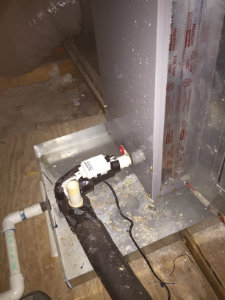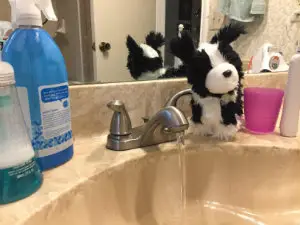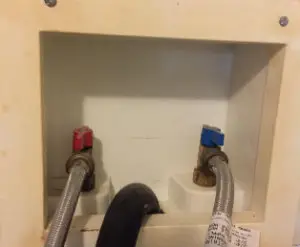How Air Conditioning and Plumbing Systems Work Together
Your air conditioning and plumbing system are linked together to keep moisture, humidity and water contained. Leaks, floods and moisture build-up can cause mold and mildew, especially in our humid climate. Extra moisture can cause a lot of damage.
When hurricanes, floods and now ice storms cause flood damage and breaks from frozen pipes, it’s difficult to get the water out of the home fast enough before floors, drywalls and ceilings are ruined. (We never thought we’d have to type the words “ice storm” in Richmond, Texas!)
Those events cause the more obvious water damage. Here’s what you need to know about how the air conditioning and plumbing systems work together and how to spot water leaks that might not be obvious at first. This can help you hire the right professional to help you out!
Ways to Spot Water Leaks to Minimize Damage
Sometimes it’s easy to spot water damage because water is pouring through a wall or a ceiling. The first thing to do is to shut off the water to the home. Know the location of your home’s water shut-off switch and how to shut it off in the event you have a water leak.
Many more times, water leaks may be less apparent. Here’s a few ways to watch for damage:
- Examine your water bill. Is it much higher than usual with no explanation?
- Be observant and watch for stains in carpet, walls, and ceilings, especially around appliances, faucets and toilets.
- Is there a new dank or musty smell in the home that can’t be explained?
- Is your flooring warping or not laying flat?
- Do you hear a dripping sound and you can’t tell where it’s coming from?
- Is paint bubbling up or wallpaper peeling for no reason?
- Are plumbing fixtures damp or showing signs of rust or corrosion?
- When your air conditioner is on, is water dripping from the condensate drain outside your home?
Maintaining Your HVAC Condensate Drain

An air conditioning condensate drain and float switch sit atop a drain pan. If the drain pan fills with water, it means the drain is clogged.
Check the Condensate Drain Outside the Home
The first step to maintaining your condensate drain is to look for where the drain exits the home. During hot weather along the humid Gulf Coast and when your air conditioner is running, that drain should be dripping. This is evidence that it is removing humidity from the air.
When the air conditioner is not running, that drain should not drip.
If your drain is not dripping when your air conditioner is running, you might have a clogged drain.
If you can’t find a drain exiting your home, your condensate drain could be tied into your plumbing system. More on this later in the article.
How to Keep Your Condensate Drain Clear
Inspect and maintain your HVAC condensate drain next to your indoor evaporator coil by pouring a half-cup of vinegar, not bleach, in the condensate drain once each quarter.
In many homes in our area, the top of the drain is located in the attic. Sometimes it will be in a closet in a hallway.
If you can only remember to do it once or twice a year, it will be better than never doing it.
If this type of maintenance isn’t your cup of tea, ask your HVAC contractor if condensate drain maintenance is part of the regular maintenance plan they offer.
Install a Float Switch
If you don’t have a float switch or ceiling saver switch already, have one installed. These handy switches turn off your air conditioner in the event that your drain clogs and your drain pan fills up.
Your HVAC contractor will be happy to show you where the drain is located, how to maintain it, and if you might benefit from a drain pan float switch.
Depending on the municipal code in your area, newer HVAC systems require the installation of float switches, so you may already have one or two!
Check Your Air Conditioning Condensate Drain Pan
If you have water in your condensate drain pain, it usually means you have a clogged drain. You can try to fix it yourself or call a licensed HVAC technician for help.
If you look at your HVAC condensate drain pan and notice that it’s rusted through, that can make the problem worse. A float switch or ceiling saver switch won’t fix that.
Because humidity is such an issue in our area, we install rustproof drain pans in all of our new HVAC installations to avoid that issue. It makes drain pans last much longer.
How to Make a Clogged Condensate Drain Stop Leaking
If you observe water pouring from your ceiling and you suspect it is because you have a clogged condensate drain, the fastest way to make the water stop is to shut off the air conditioning system.
What If Your Condensate Drain Is Attached to Your Plumbing System?
In some homes, the HVAC condensate drain is independent and not connected to your home’s plumbing system. In other homes, the HVAC condensate drain may be plumbed into your home’s plumbing system. Typically, we see a condensate drain tied into an upstairs sink.
If this is the case you won’t be able to observe your condensate drain exiting the house and see if it is dripping or not. You will be able to observe the drain pain though.
If you have a very big clog in your condensate drain AND another clog in your plumbing system, it could cause a back-up in your plumbing system. This does not happen often, but it is possible, which is why it is so important to keep an eye on your plumbing system regularly.
Here’s a scenario we have observed on more than one occasion: A homeowner has an upstairs sink that isn’t used often and has begun to drain slowly. It’s not a priority to fix because no one uses it much. The homeowner may be unaware that their HVAC condensate drain is tied into this sink. They may have been unaware that a condensate drain needs maintenance, too.
When a sink and condensate drain both have clogs, it can create a perfect storm causing a messy situation requiring both a plumber and HVAC professional’s help. Maintenance pays.
Check Your Plumbing Regularly

Make sure to watch for clogs and slow-draining sinks, especially in bathrooms that aren’t used often.
Spot-check Plumbing Fixtures and Appliances
Make it a regular part of your spot-checking maintenance schedule to observe that all of your sinks, toilets, tubs, showers, kitchen disposal, dishwasher, washing machine, ice maker, and water heater are working properly and don’t have any clogs or seeping water around them or their pipes.
Fix Slow Drains and Avoid Clogs
One way to check the drains is to fill the bathroom sink and see how quickly it drains. If you have a sink that is slow to drain, it is usually pretty easy to address.
I installed a nifty Drain Strain on my kids’ sink because it kept getting clogged and this makes it easier to clean out.
Your shower or tub should have a strainer to catch hair so you can remove it before it slows down the drain. There are many more options for strainers at your favorite home improvement store. Your plumber may have more ideas!
Better yet, be careful of creating clogs in your plumbing by accident. Certain things, including toys like Orbeez, should never be poured down a drain.
Schedule Regular Maintenance on Your Plumbing
Do not make the mistake of skipping regular plumbing maintenance. Plumbers often give the advice that plumbing maintenance for most homes should be scheduled every two years.
In newer homes, air conditioner condensate drains are plumbed into a bathroom sink most commonly.
If you get a clog in your condensate drain that is dislodged and there is another hidden clog in that bathroom, it can cause an unexpected backup into your plumbing system. This situation will require a plumber’s help and is totally preventable.

Another source of water leaks can come from faulty hoses on your clothes washer.
Inspect Your Home’s Appliances
Don’t forget to check your home’s appliances that use a lot of water because their hoses and connectors can be the source of water leaks.
Your washing machine, water heater, dishwasher, water softener and ice maker/water dispenser attached to your refrigerator/freezer also have water lines connected to them.
Mildew and Mold Form Quickly
What Causes Mold or Mildew to Form?
When a home experiences a leak or build up of moisture from a condensate drain from the air conditioning or in plumbing to the rest of the home, it is important to clean up the water as quickly as possible. Mold and mildew can begin growing in a very short time especially in warm, humid climates like ours.
Besides plumbing and HVAC condensate drain problems, another way that mold can get started is if an air conditioner is too big for the home. Moisture can get trapped behind interior walls, causing expensive problems.
Why Mold and Mildew Removal Is Important
It’s easy to identify mold and mildew by its distinctive musty smell and the telltale dark spots when it really gets going.
Moisture and dampness can also be a hazard to health if left untreated. Mold adversely affects indoor air quality.
The Environmental Protection Agency offers much more information about the safe identification and removal of mold after a flood, leak, or moisture buildup in your home.
Drying Out a Home After a Major Water Leak
To preserve a home’s indoor air quality, it’s important to dry things out quickly if they get wet. Water damage restoration professionals are the ones to call if this happens to you.
Ultraviolet lights placed in your duct work and/or the installation of a high-end whole home air purifier, which actively removes airborne contaminants, can purify the air in your home.
We installed a whole-home air purification system for a customer after a major hurricane, and it made a huge difference in indoor air quality in just a short amount of time.
Get in Touch for Expert Help
Maintenance and inspection of your plumbing, appliances, and air conditioning equipment will go a long way toward preventing most leaks and moisture problems in your home. This is one of the reasons we recommend maintenance of your air conditioner in the spring.
Terry’s A/C and Heating specializes in the expert diagnosis and repair of your HVAC system. Call or text us today at 281-495-7830 and ask us how we can help you prevent destructive water leaks from your HVAC condensate drain and keep humidity levels at a comfortable level.
We are happy to give referrals to plumbers that we use regularly, if it turns out that your leak is related to your plumbing system and advice about homeowner’s insurance that may be able to help you cover any unexpected damage if water damage does occur.
Photo credits: Canva.com (header image); All others Terry’s A/C & Heating images


 For
For  Call Us:
Call Us:  Text Us:
Text Us: 



